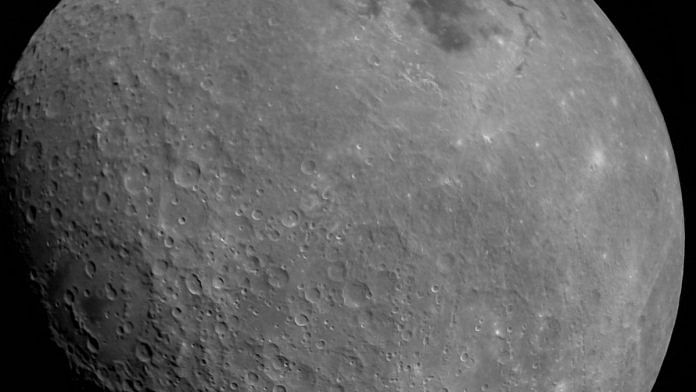Bengaluru: It has been nearly a week since scientists at the Indian Space Research Organisation (ISRO) lost contact with the Chandrayaan-2 lander ‘Vikram’ — leading to an incomplete second lunar mission. ISRO has now very little time left as the lunar night — equal to 14 Earth days — will set in by 21 September when the lander, which runs on solar power, will go to sleep and most likely never wake up.
Vikram was supposed to land on the Moon’s surface in the early hours of Saturday (7 September). While the official statements from ISRO have said that attempts are being made to establish contact with the lander, new reports have emerged to state there is little hope of it.
In an internal meeting, ISRO Chairman K. Sivan is said to have advised teams working on the lander to move on to their next projects.
The official statement so far had detailed how Vikram reached up to 2.1 km above the moon’s surface with its engines and sensors performing “nominally” before subsequently losing contact with the ISRO scientists on Earth.
ISRO had only announced that the Orbiter High Resolution Camera (OHRC) on board Chandrayaan-2 had photographed the landing site, without going into further details. It has maintained that data received is being analysed.
The OHRC has the highest resolution among all cameras around the Moon at present.
Also read: No ISRO update on Chandrayaan-2 lander but social media goes wild with speculation
No information on lander’s condition
The orbiter, India’s 32-metre antenna at the Byalu ground station, and NASA’s Deep Space Network’s 70-metre antennae have all been attempting to communicate with the Vikram. Communication can only be established if Vikram’s antenna is pointing in the right direction, but no information of the lander’s orientation, condition, or even its exact location is known yet.
NASA’s Lunar Reconnaissance Orbiter (LRO) is expected to also photograph the site of landing at a different angle from the OHRC on 17 September and share data with ISRO. But all space agencies are fast running out of time as the 14 Earth-day-long lunar night would set in by 21 September — bringing to a permanent standstill all efforts to photograph and establish communication with the lander, which runs on solar power.
Meanwhile, doppler curve data has suggested that the orbiter’s path around the Moon is a bit more elliptical than expected, with the orbiter seemingly lower in orbit over the South Pole, near where the landing site is.
The orbiter does have enough fuel to fire its engines and lower itself to a 50-km orbit to better photograph the landing site before climbing back again. Sivan had recently clarified that the orbiter’s lifespan has been upgraded to seven years from the expected minimum of 1 year, signifying that there is ample fuel in it.
Since the launcher had ‘over-performed’ and reached an orbit higher than expected over the Earth, even more fuel conservation has been achieved. Counter-intuitively, lowering and climbing would use much less fuel than attempting to stay at a lower orbit because of uneven lunar gravity.
The moon exhibits gravitational anomalies all over its body due to mass concentrations or mascons. Uneven mass distribution changes the effect of gravity at different regions of the Moon — it is the most gravitationally “lumpy” body in the solar system.
This effectively also makes it difficult for any spacecraft to maintain a low orbit or a perfectly circular orbit. It is the reason why the orbiter’s 119 km x 127 km orbit is considered to be as good as a circular 100-km orbit.
As speculations about loss of contact carry on with no official word, the failure analysis committee (FAC) continues to investigate Saturday morning’s events that led to loss of communication and change in trajectory of the lander.
Also read: VHP seeks divine intervention, conducts yajna for Chandrayaan-2′ lander Vikram






